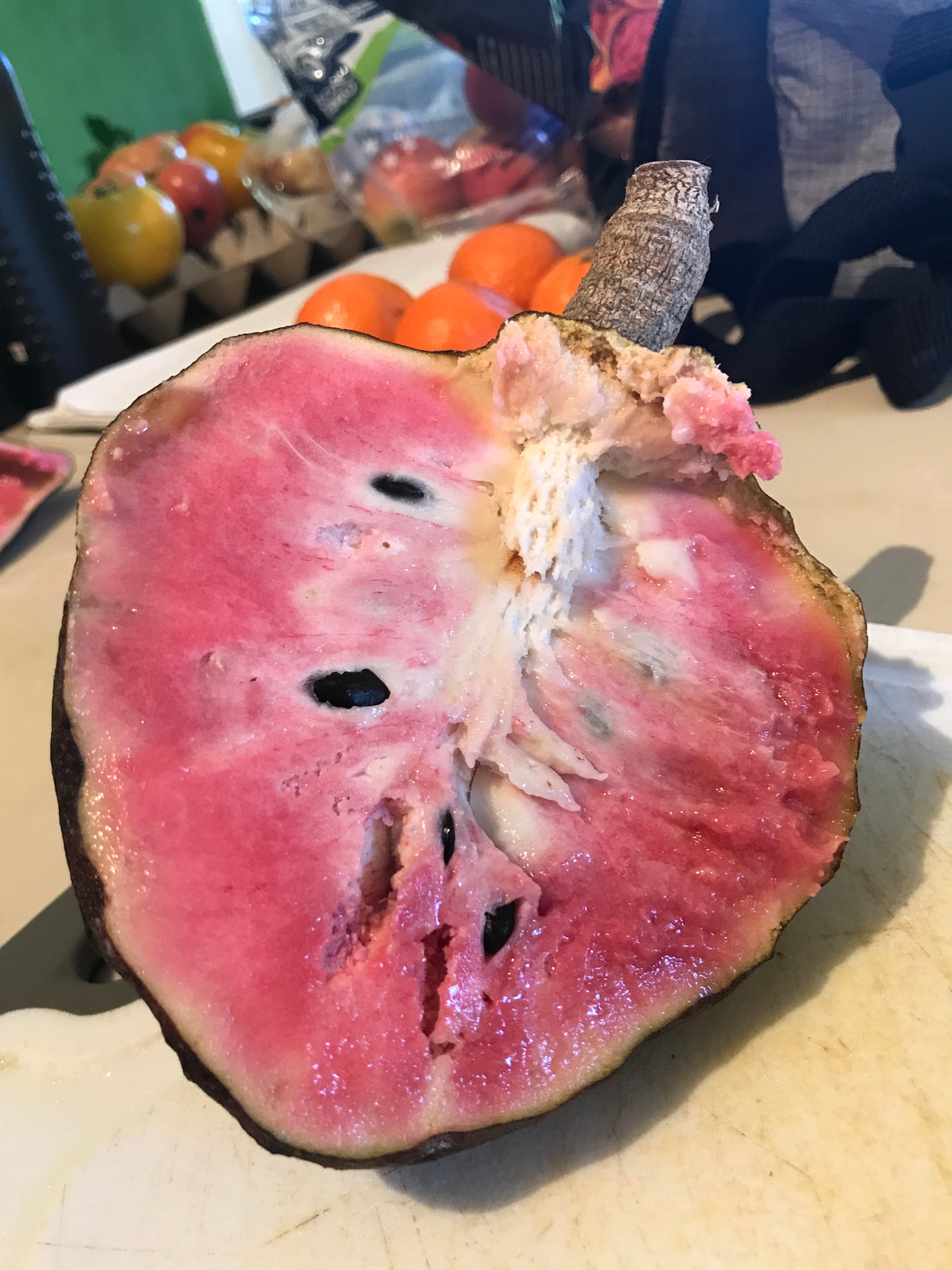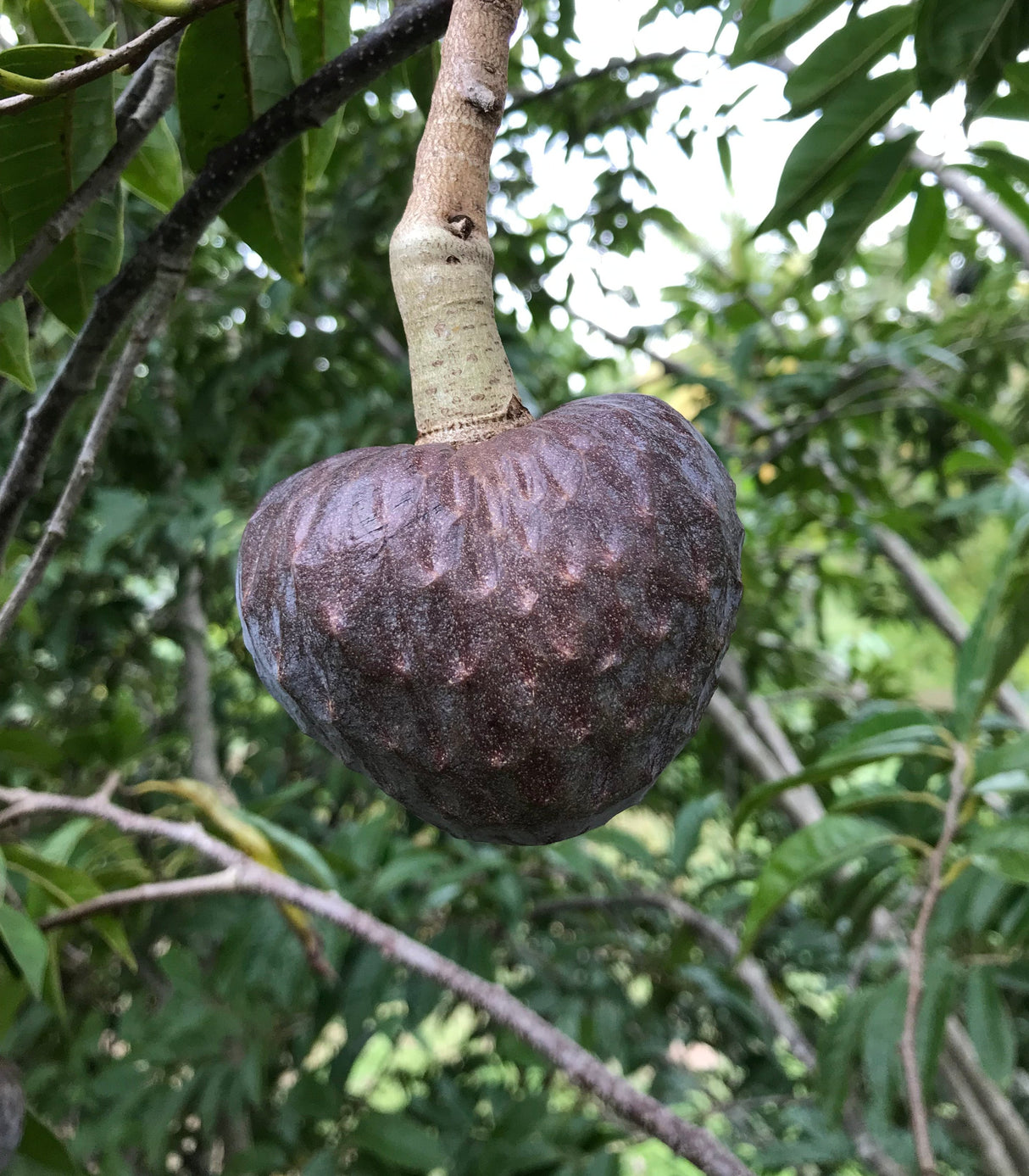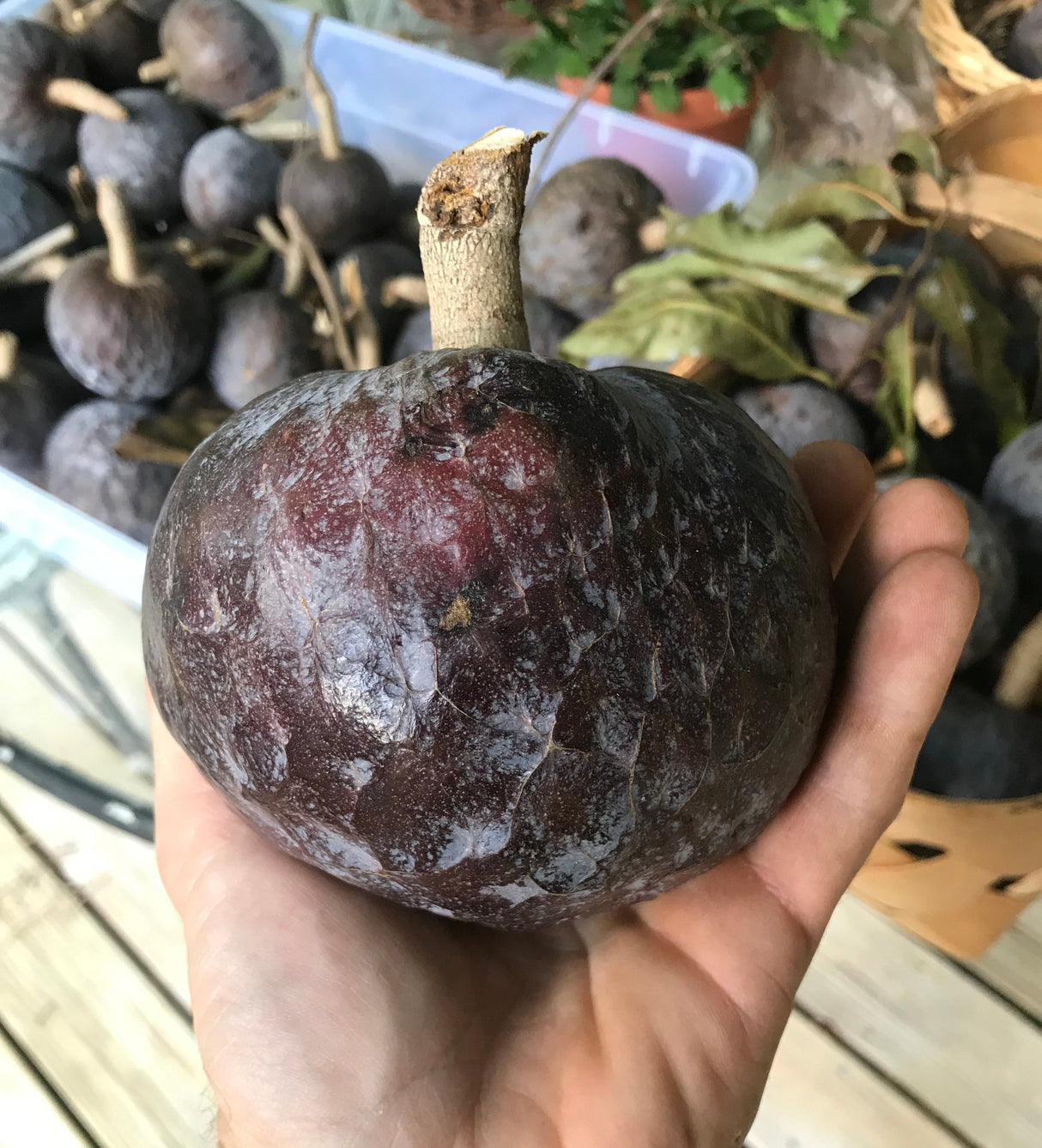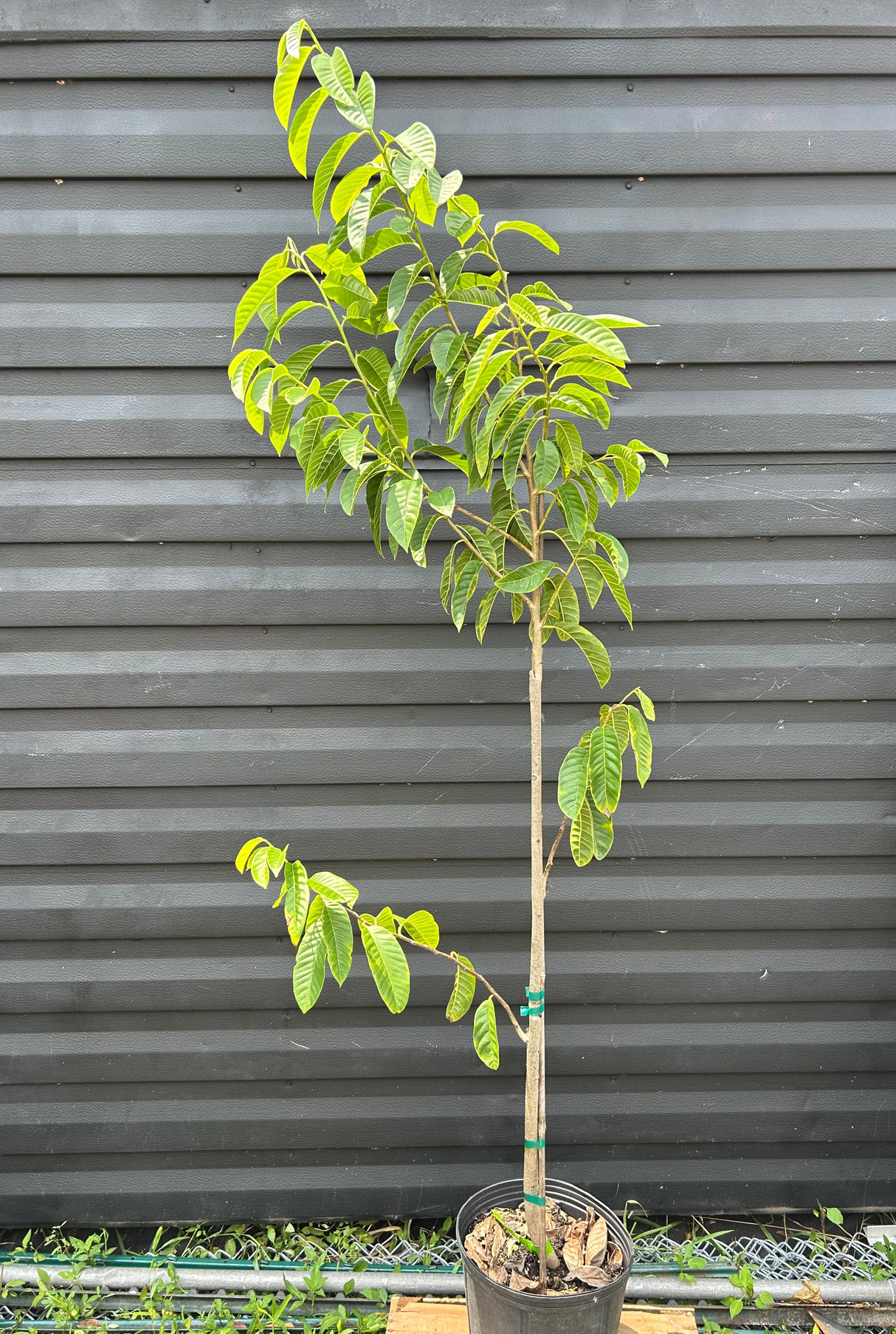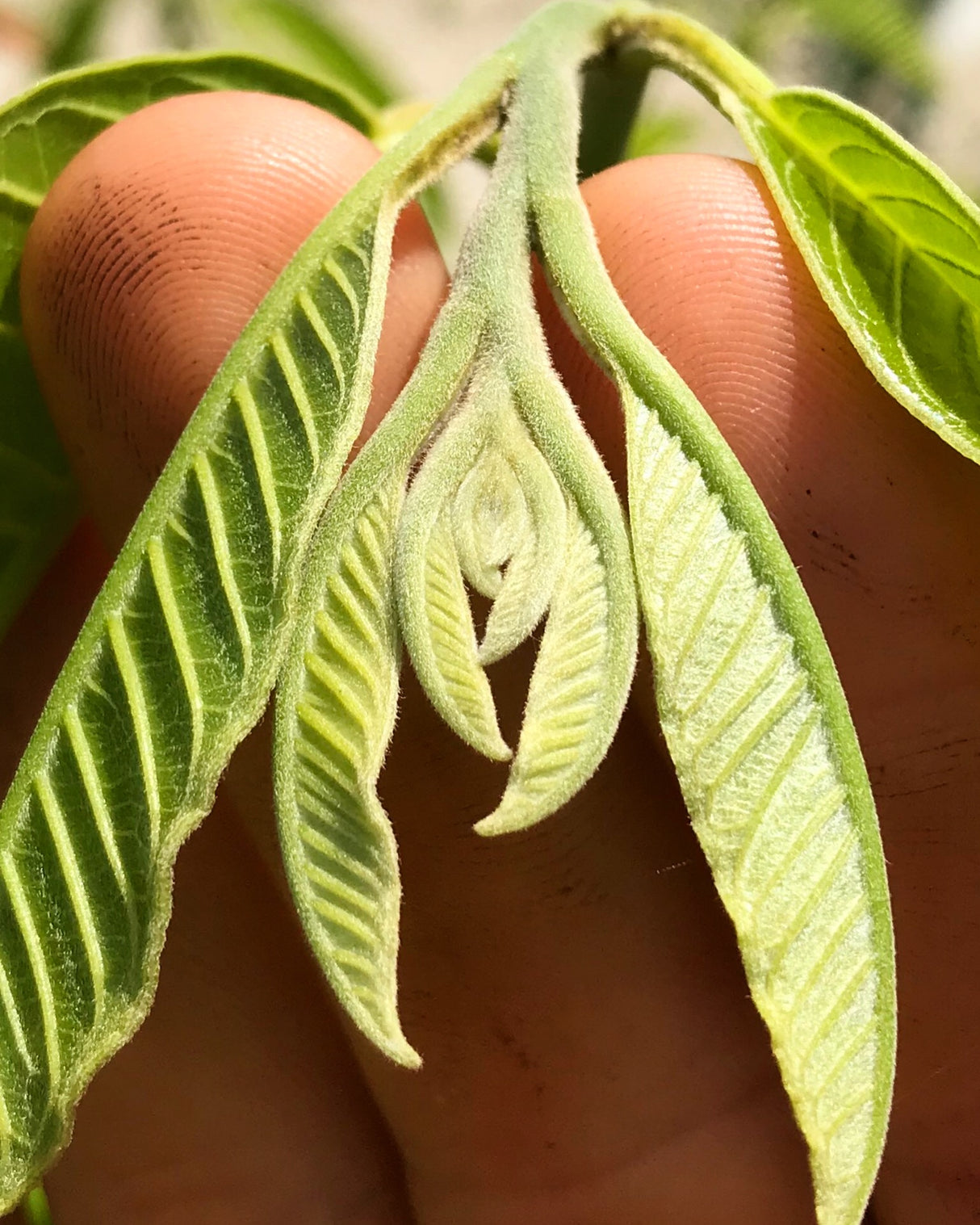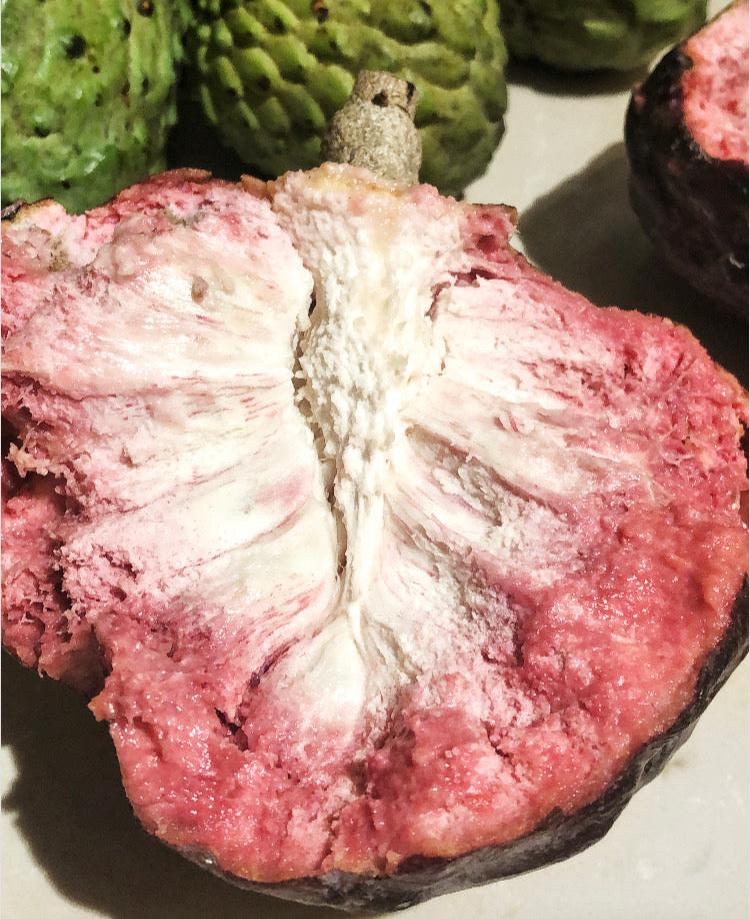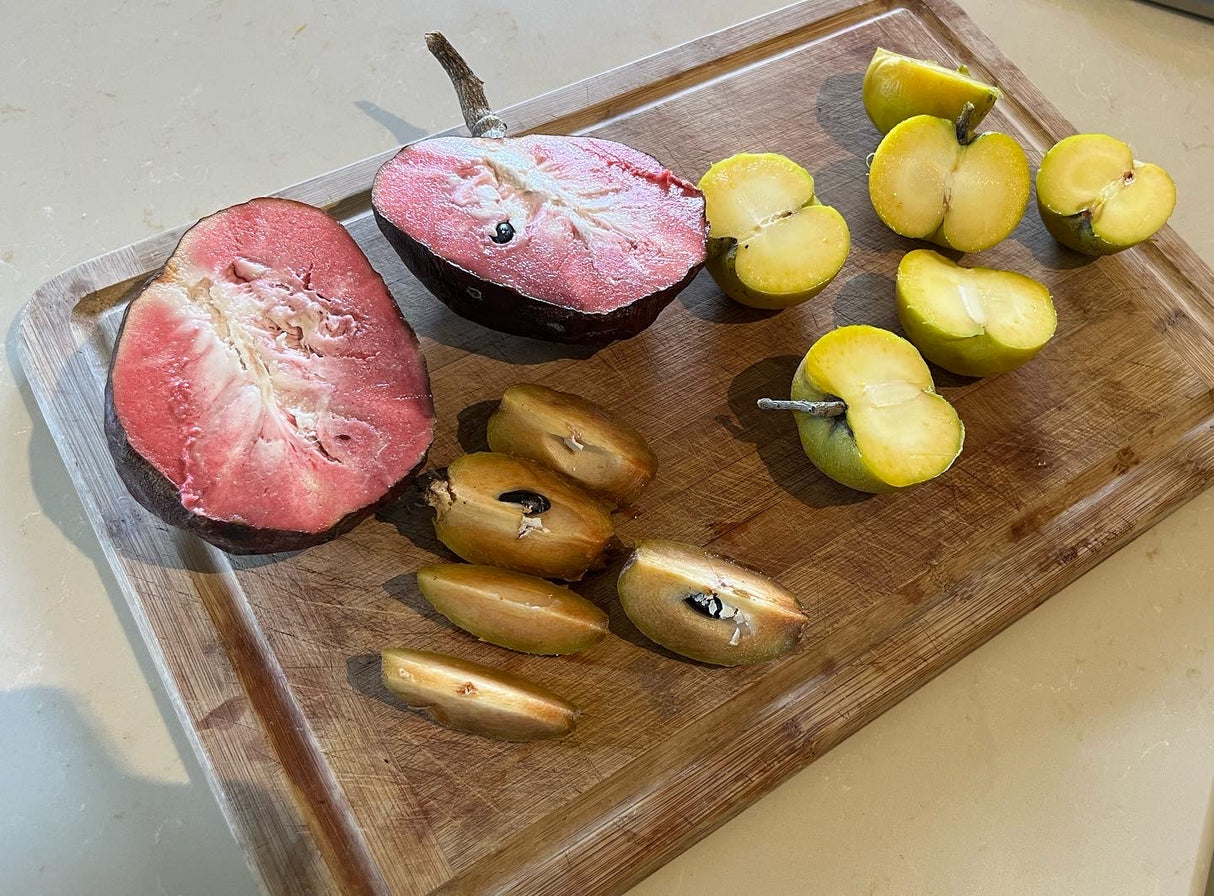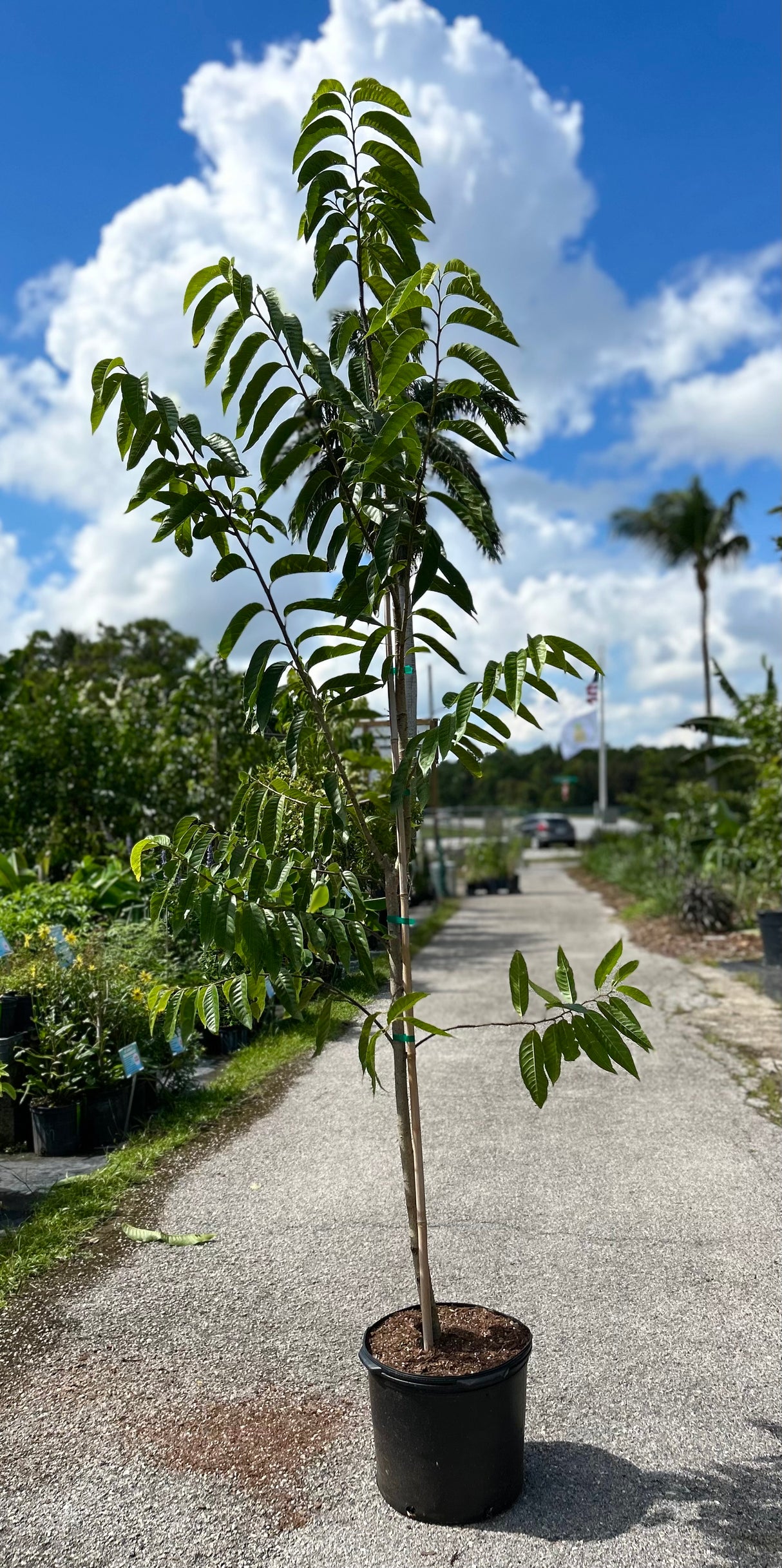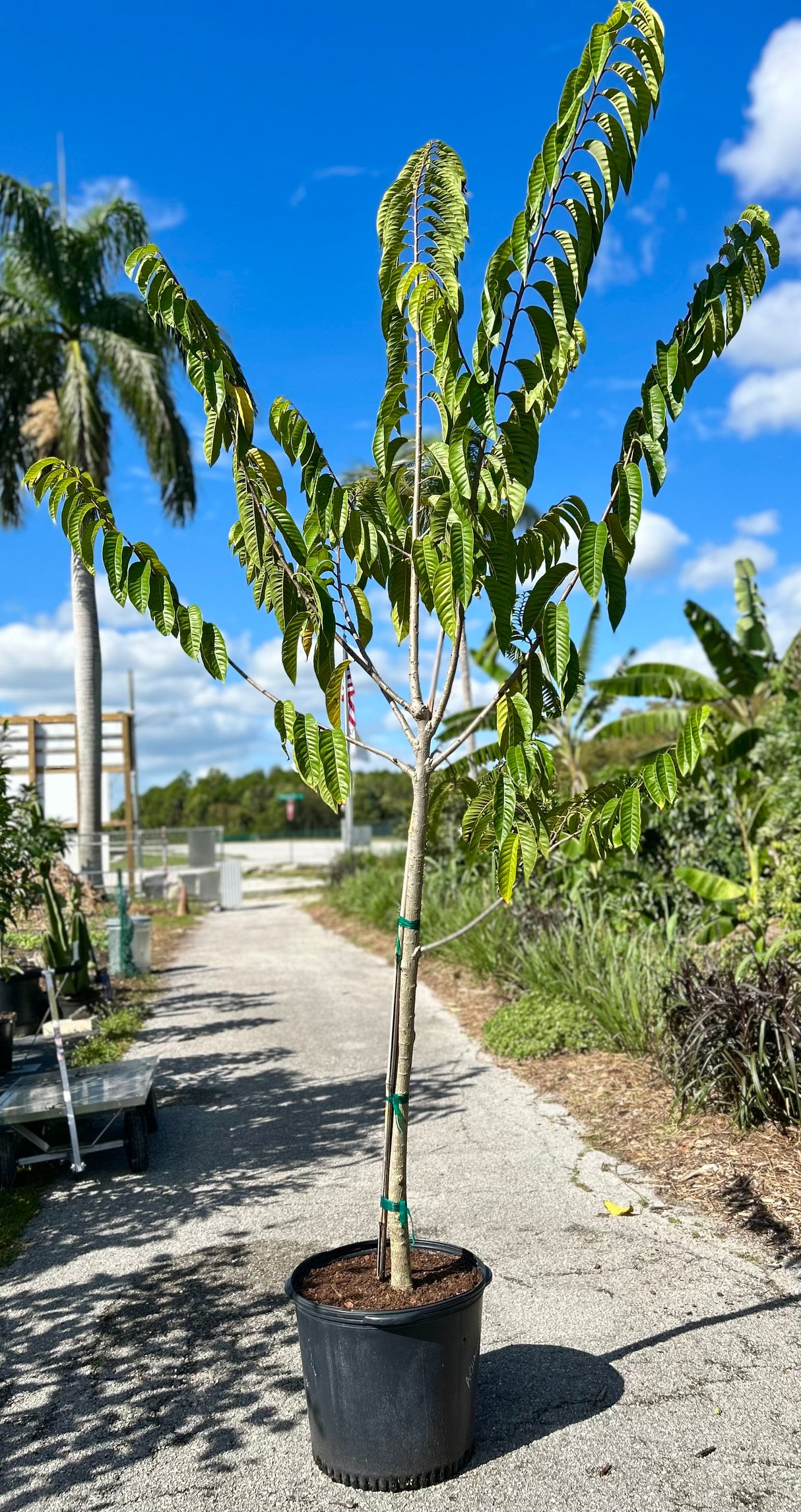Custard Apple Tree - San Pablo seedling
Custard Apple Tree - San Pablo seedling - 7 Gallon is backordered and will ship as soon as it is back in stock.
Fruit Tree Pot Size Reference Guide
Fruit Tree Pot Size Reference Guide
Display general product information or specific product information using metafields.
We sell grafted fruit trees in various sizes, ranging from young 3-gallon plants all the way up to 25-gallon and larger, mature trees.
As a general rule of thumb, here’s what you can expect from each size:
3 gallon: Will take an average of 2-3 years before harvesting your first crop. Trees are small and may be just a single stem, or just starting to develop their first branches. Typical height is between 2-4 feet.
7 gallon: Will take an average of 1–2 years to produce a crop. Branching structure has started to develop, and trunks are between ½ to 1 inch thick. Typical height is between 3-6 feet.
15 gallon: You can usually expect fruit within a year of planting, and some trees are already fruiting at this size. Branch and canopy structure has taken shape and the tree is starting to grow wider. Trunks are between 1 to 1-½ inches thick. Typical height is 5-8 feet.
25 gallon and larger: These are mature trees, and most are ready to produce fruit or have already produced. They have been pruned and shaped multiple times at this point. Trunks are about 2” thick or larger. Typical height is 6-10 ft.
PLEASE NOTE: These descriptions are generalized - Some species of fruit trees are very quick to produce, and others take longer. For example, mulberry trees can start fruiting at a very young age, even as small as a 3 gallon. Mango, avocado, or sapodilla trees will take longer. Each species grows at a different rate and will take varying lengths of time to establish, and even different cultivars can be more precocious (quick to produce) than others.
Order Pick Up/Delivery Info
Order Pick Up/Delivery Info
When you select the “Nursery Pickup” option at checkout, please allow up to 24-48 hours for your order to be prepared for pickup. Once your order is ready for pickup, we will email you to let you know that it is ready. Plant orders may be held at the nursery for up to 10 days. If orders are not picked up within this time frame, a 15% restocking fee will be charged. If you are unable to pick up your order, please contact us to request a quote for delivery.
If you prefer to have us deliver your plants, select "Ship" at checkout and choose the "Local Delivery" option. (This option will not be visible if your order is below the $300 minimum for delivery). Delivery cost for orders within 20 miles is a flat rate of $50. If your address is further than 20 miles, we will invoice you for the additional mileage at $3/mile upon fulfilling your order. Deliveries are typically scheduled on Tuesdays and Wednesdays. Please include your phone number and any delivery instructions in the order notes.
Responsibility of Care
Responsibility of Care
Return Policy
Return Policy
All sales are final at the time of payment. Please be sure that you are happy with your order before submitting. Returns or exchanges will only be made under exceptional circumstances, at our discretion, and are subject to a 15% restocking fee. Once plants have left the nursery and are no longer in our care, they cannot be returned.
Inventory Disclaimer
Inventory Disclaimer
Every day, we take great care to maintain our inventory and make real-time updates as plants come and go. Because our inventory is constantly changing, and because in-store and online purchases are being made simultaneously, it is possible for a short window to occur when an item is physically sold out, but listed as in-stock on this platform. This is rare, but in the case that it does happen, we will contact you right away and either refund the item or offer an alternative. Thank you for your understanding!
Additionally, we add new plants to the nursery on a weekly, sometimes daily basis. Check back often to see what’s in stock, and click the “Notify me when this item is available” button to get updates when your wish-list items are restocked!
Description
Description
Latin name - Annona reticulata
Custard Apple (San Pablo seedling)- A seedling from the fruit of a ‘San Pablo’ custard apple, which will have similar pink & white flesh and rich, creamy flavor.
______________________________________________________
The Custard Apple is a sometimes overlooked member of the Annona family, but its taste is divine. We compare it to raspberry cheesecake: a very sweet, dense, and decadent fruit, like eating a rich dessert. The fruit is large, often 2-3 lbs, with a smooth purpleish skin, turning bright red as the fruit becomes ripe. When the whole fruit feels soft to the touch, it can be cut in half and eaten with a spoon… or just dig your face into it if you don’t mind getting a bit messy. They’re that good.
Because Annona fruits are grown in many countries around the world, sometimes they get confused with one another. One example of this is that in Cuba (where Custard Apple is a well known and common fruit) it is referred to by Cubans as “chirimoya” or “cherimoya”. Although related to Cherimoya, it is not the same fruit. Custard Apple happens to be much more well suited to fruiting at sea level than its cousin, the Cherimoya.
Custard Apple trees grow vertically, with an upright and open canopy. They have deep green, glossy leaves which drop from the tree over a few months during winter, and are replaced by new spring growth. Flowers are formed in late summer or fall which leads to fruit ripening in springtime, usually March through May. Most Custard Apples produce a red skinned fruit with a white and pinkish-red interior, but there are also green skinned/white flesh types, and even some yellow or orange types. Custard Apples can occasionally be found as grafted trees, but seedlings are reliably true to type. A seedling will most likely produce fruit very similar to that of its parent.
Custard Apple trees can be very productive under the right conditions, and we’re excited to see our two trees begin to produce soon! Plant yours in full sun, in a well draining area with access to water. Expect your tree to reach at least 12-15 feet or taller at maturity. Custard Apples can typically start producing fruit at 4-5 years old.
____________________________________________________
Size: 12-25 ft. Tall and wide
Sun Requirements: Full sun
Cold Hardy: Will sustain damage if there is frost or below-freezing temperatures
Harvest Season: Spring
Watering requirements: Does best if watered regularly


